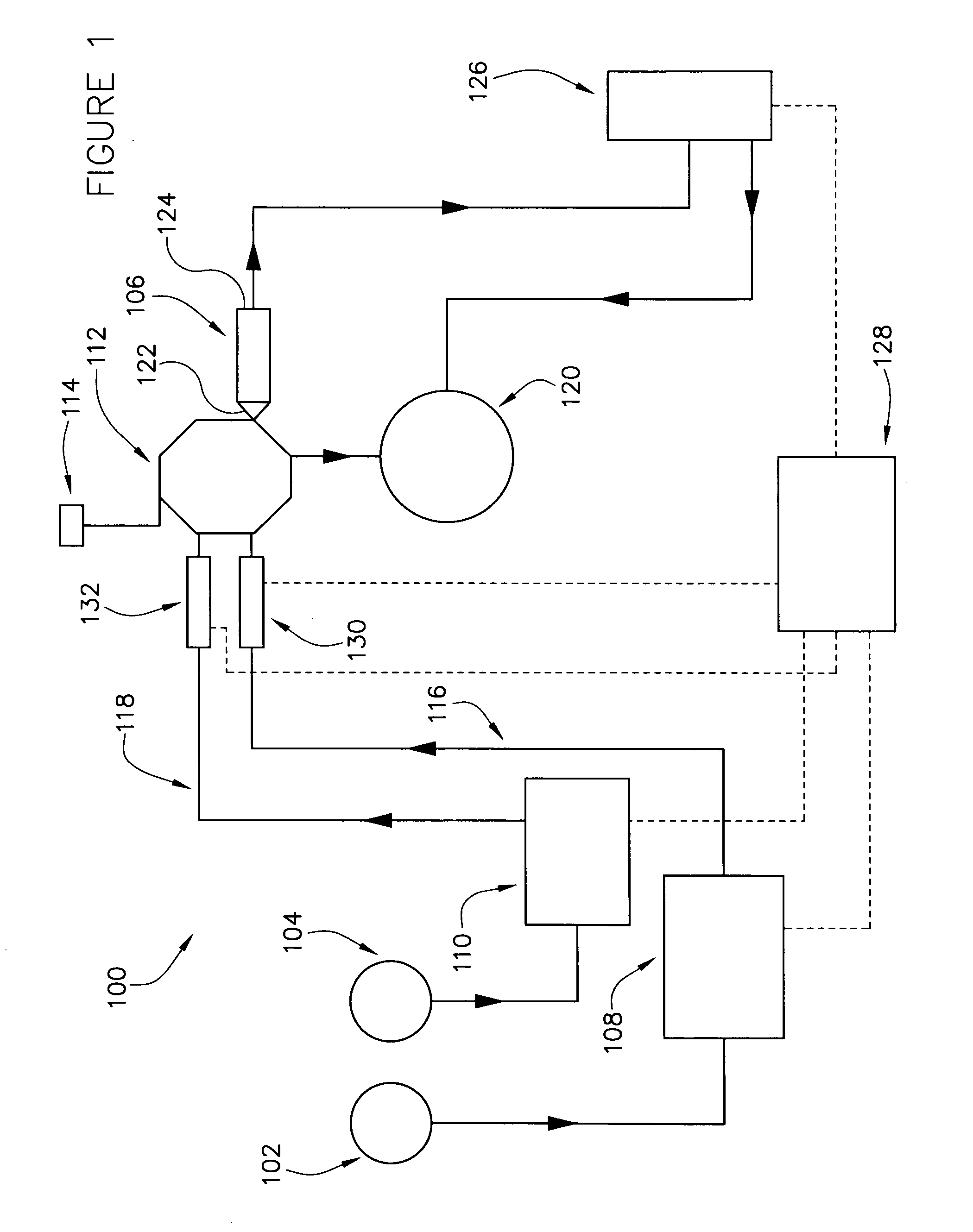System and method for rapid chromatography with fluid temperature and mobile phase composition control
a technology of fluid temperature and composition control, applied in the field of material characterization, can solve the problems of not being able to predict a priori the physical or chemical properties of a particular polymeric material or the precise composition, the known liquid chromatography system is not suitable for efficiently screening large numbers of polymer samples, and the tref separation typically does not very mobile phase composition and can be very time-consuming. , to achieve the effect of rapid separation of polymer samples
- Summary
- Abstract
- Description
- Claims
- Application Information
AI Technical Summary
Benefits of technology
Problems solved by technology
Method used
Image
Examples
examples
[0125]FIGS. 6A through 6D are graphical data showing the attainable temperature controls for the environments in the columns of the liquid chromatography system of the present invention by controlling line temperatures, flow rates of solvents and compositional control of solvent mixtures.
[0126]FIG. 6A is a plot showing the temperature of the mobile phase at the inlet of the column after fifteen minutes. The plot shows temperature monitored at the inlet of the column versus the temperature of the heated line for various flow rates. Flow rates of 3, 4 and 5 mL / minute of fluid where run through the system, with the hot line temperature ranging from 200° C. to 300° C. Data points were collected when the temperature of the electrically heated line reached 200, 220, 240, 260, 280 and 300° C. For the various flow rates, temperatures of the fluids at the inlet of the column ranging from about 130° C. to about 220° C. were accomplished.
[0127]FIG. 6B is a plot showing the temperature of the...
PUM
| Property | Measurement | Unit |
|---|---|---|
| Temperature | aaaaa | aaaaa |
| Temperature | aaaaa | aaaaa |
| Temperature | aaaaa | aaaaa |
Abstract
Description
Claims
Application Information
 Login to View More
Login to View More - R&D
- Intellectual Property
- Life Sciences
- Materials
- Tech Scout
- Unparalleled Data Quality
- Higher Quality Content
- 60% Fewer Hallucinations
Browse by: Latest US Patents, China's latest patents, Technical Efficacy Thesaurus, Application Domain, Technology Topic, Popular Technical Reports.
© 2025 PatSnap. All rights reserved.Legal|Privacy policy|Modern Slavery Act Transparency Statement|Sitemap|About US| Contact US: help@patsnap.com



